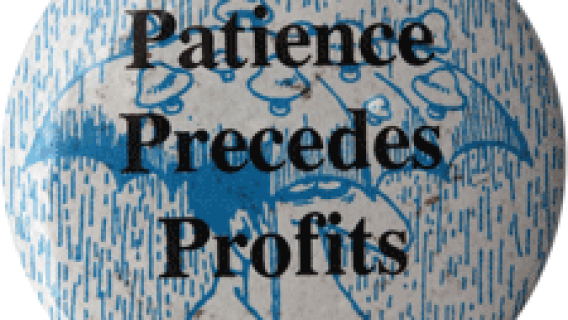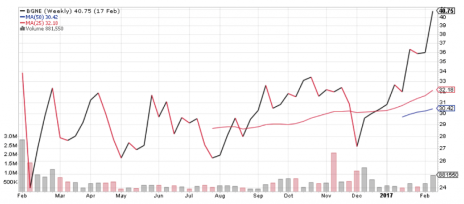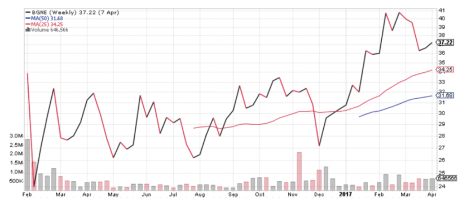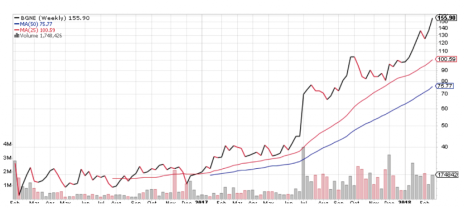If growth investors are going to succeed, they need to do a lot of things right, some of them obvious and some not.
Everybody knows that successful growth investing requires good stock selection. From the thousands of stocks (the Wilshire 5000 Total Market Index included just under 3,500 stocks at the end of 2017), that trade on U.S. exchanges, an aspiring investor must isolate likely candidates and winnow them down to a manageable number. Whether the selection is done by analyzing fundamentals (like revenue and earnings growth), by scanning earnings beats or by looking at charts, it’s a tough job.
There’s also portfolio construction to consider. How many stocks will you hold and how much capital will you allocate to each stock and how much to cash?
Then there’s the critical matter of setting (and following) loss limits, and having a plan to take profits.
[text_ad use_post='129628']
And don’t forget about assessing (and adjusting to) the momentum of the market itself.
But I think the one attribute successful growth investors must have is patience.
Patience is an Underrated Virtue for Growth Investors
Growth investors are generally fairly aggressive, and have a bias for action that makes them want to be making moves rather than just sitting there.
But as Jesse Livermore famously said in Reminiscences of a Stock Operator, “After spending many years in Wall Street and after making and losing millions of dollars, I want to tell you this: It never was my thinking that made the big money for me. It always was my sitting.”
What the legendary Livermore was talking about was catching a major trend and holding on. It was patience to stick with his winners that made him the big money.
I have a great example from my own experience as Chief Analyst of Cabot Global Stocks Explorer.
A little over a year ago, I recommended a Chinese stock called BeiGene (BGNE) to my subscribers. BeiGene was a clinical-stage biopharmaceutical with no products on the market, but several promising candidates in clinical trials. The company had a partnership with a major pharmaceutical house, but investors were only interested, not impressed.
I had put the stock on the portfolio’s watch list in November 2016, when it was trading at 33, and I was encouraged by its rebound from a low of 27 in December to new high territory. I bought the stock for the portfolio at 41, just as it was breaking out to new highs after a long post-IPO consolidation. Here’s what the entire chart looked like on the day of the buy.
It was an aggressive buy, but at the time, the general trend of Chinese stocks was up, and it seemed like a good opportunity to get in early on a promising setup.
A couple of months later, with many emerging market stocsk doing well and BGNE trading down three points from its buy price, I sold it. Here’s what the chart looked like then.
I won’t go into the company’s history after that sell, except to say that in 2017, BeiGene made an alliance with an even bigger drug company, got a bunch of up-front payments, a rich menu of incentive targets and exclusive rights to a portfolio of approved drugs to sell in China.
This is what the entire history of BGNE looks like today, on the day I again recommended it to my subscribers as a good risk/reward buy.
It’s a difficult lesson to learn. And when I sold BGNE after a couple of months and a small loss, it was entirely possible the stock might continue its correction and skid lower, piling up a loss that would have made a dent in the portfolio’s excellent gains for the year.
But a little patience would also have been nice.
In the end, the big money is made in the big swing—owning a good-sized position in a leader and riding it for many months. Keep that in mind the next time you catch a tiger by the tail.
[author_ad]




